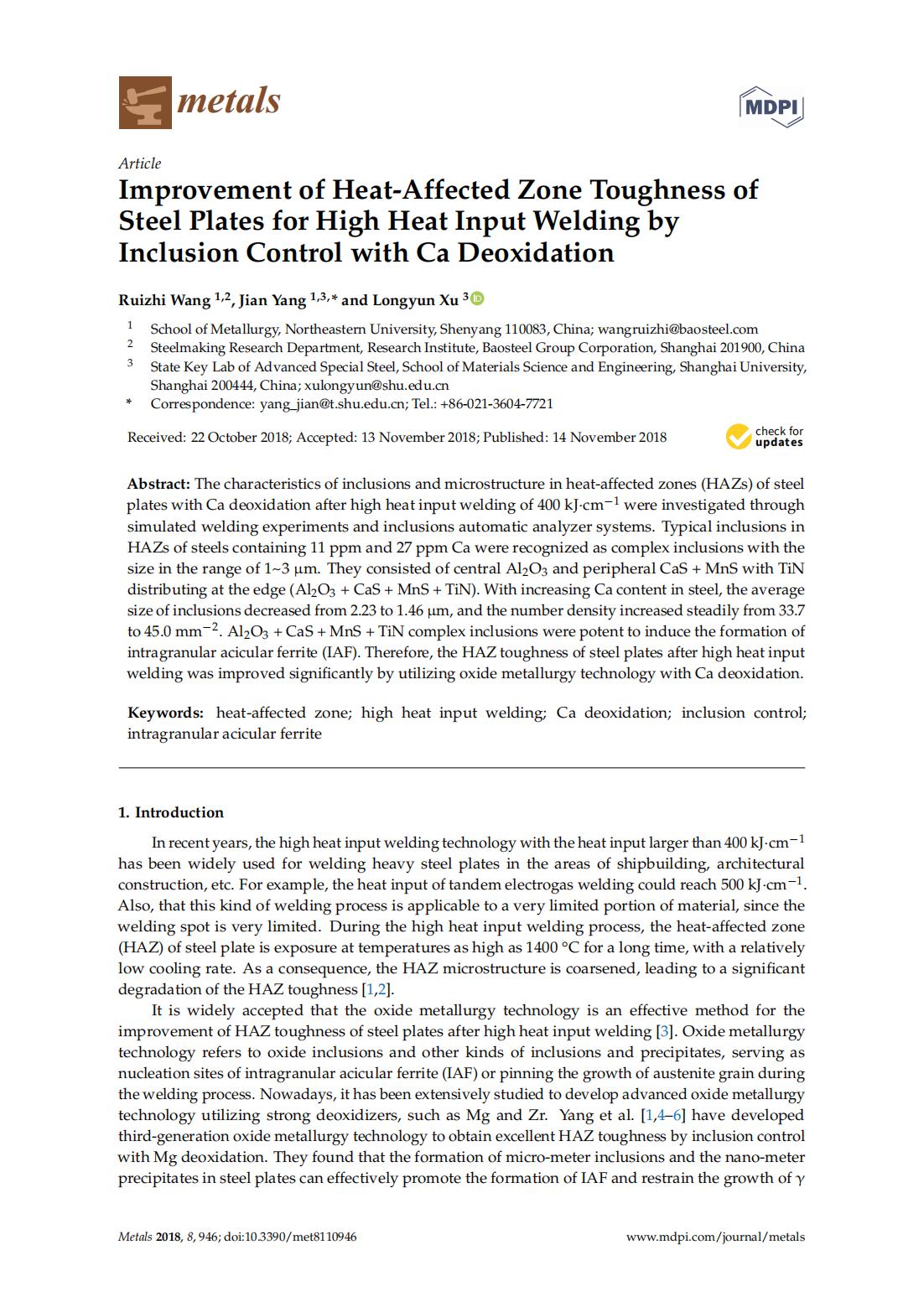The characteristics of inclusions and microstructure in heat-affected zones (HAZs) of steel plates with Ca deoxidation after high heat input welding of 400 kJ·cm−1 were investigated through simulated welding experiments and inclusions automatic analyzer systems. Typical inclusions in HAZs of steels containing 11 ppm and 27 ppm Ca were recognized as complex inclusions with the size in the range of 1~3 μm. They consisted of central Al2O3 and peripheral CaS + MnS with TiN distributing at the edge (Al2O3 + CaS + MnS + TiN). With increasing Ca content in steel, the average size of inclusions decreased from 2.23 to 1.46 μm, and the number density increased steadily from 33.7 to 45.0 mm−2. Al2O3 + CaS + MnS + TiN complex inclusions were potent to induce the formation of intragranular acicular ferrite (IAF). Therefore, the HAZ toughness of steel plates after high heat input welding was improved significantly by utilizing oxide metallurgy technology with Ca deoxidation.
